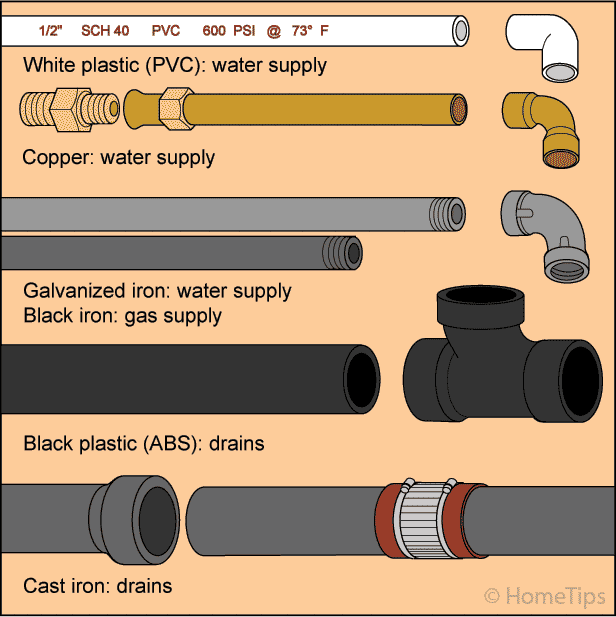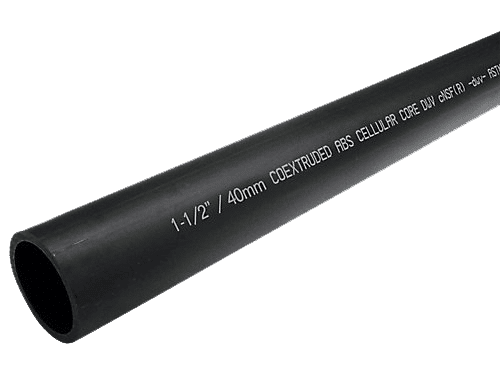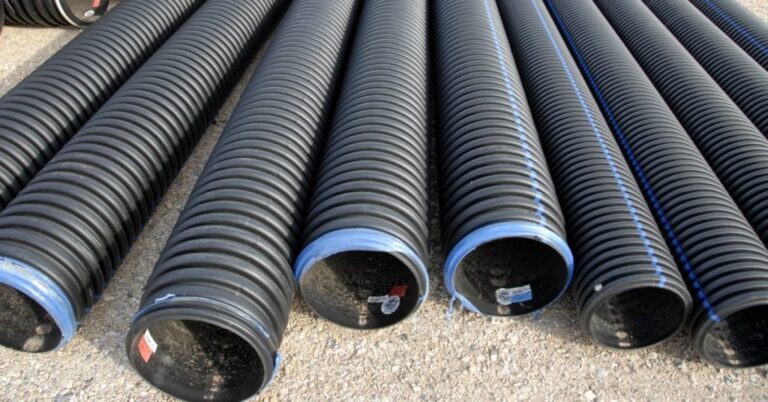What Size Pipe Is Used In Plumbing?
Pipe size is a critical factor in plumbing applications, as it determines the amount of water that can pass through the pipe. The size of pipe used in a plumbing system depends on the application, the amount of water that needs to pass through the pipe, and the pressure of the water. Generally, larger pipes are used for high-pressure applications, while smaller pipes are used for low-pressure applications. The most common sizes of pipe used in residential and commercial plumbing systems are 1/2 inch, 3/4 inch, 1 inch, 1 1/4 inch, 1 1/2 inch, 2 inch, and 3 inch. Generally, pipes with a larger diameter are more expensive than those with a smaller diameter.
Types of Plumbing Pipes
Plumbing systems are essential for keeping our homes and businesses functioning smoothly. But what type of pipe is used in plumbing? The answer depends on the application, as there are several different kinds of plumbing pipes that can be used in a variety of applications. Each type of pipe has its own advantages and disadvantages, so it’s important to understand the differences between them when selecting the right type for your project. The most common types of plumbing pipes include copper, PVC, PEX, CPVC, and galvanized.
Copper is the most common type of plumbing pipe, and it has been used in homes since the 1950s. It is strong and durable, and it resists corrosion and rusting. Copper is also easy to install and is resistant to freezing and bursting. PVC pipes are a popular alternative to copper, as they are strong and resistant to corrosion. They are also easy to install and cost-effective. PEX pipes are also popular and are flexible, making them ideal for tight spaces and long runs. CPVC is a type of PVC that is designed to be used with hot water, and galvanized pipes are steel pipes that are coated in zinc to make them resistant to corrosion.
When selecting the right type of pipe for your project, it’s important to consider the application, the environment, and the cost. Each type of plumbing pipe has its own unique advantages and disadvantages, so it’s important to do your research to ensure you select the right type for the job.
Size Considerations for Plumbing Pipes
When it comes to plumbing, pipe size matters. The wrong size can cause a range of issues, from water pressure problems to complete system failure. That’s why it’s important to understand what size pipe is used in plumbing systems. Depending on the application, the size of the pipe needed will vary.
For residential applications, the most common pipes are generally 3/4” in diameter for cold water lines and 1/2” for hot water lines. Larger pipes may be used for main water lines, or for drains, such as in the case of a shower or sink drain. In commercial applications, larger pipes may be used in order to accommodate higher water flow rates.
When choosing the right size pipe for a project, there are several factors to consider, such as pipe diameter, length, and material. Different materials, such as copper, plastic, PVC, and CPVC, have different diameter sizes that must be properly matched. Additionally, the length of the pipe should be considered to ensure that it’s long enough to reach its destination.
When it comes to plumbing, knowing what size pipe is used in the system is essential for successful installation. By taking the time to understand the size and material requirements, you can ensure that the plumbing system is installed correctly and that it will function as intended.
Common Pipe Sizes and Their Uses
Pipes are essential components of plumbing systems, and they come in a wide range of sizes and types. Depending on the project, the size of the pipe you need will vary. If you’re unsure of what size pipe to use for your project, it’s important to understand the different types of pipes and their uses.
In general, pipes are measured by their internal diameter, or ID. Common sizes for plumbing pipes include 1/2-inch, 3/4-inch, 1-inch, 1 1/4-inch, 1 1/2-inch and 2-inch. The most commonly used pipe for residential and commercial plumbing applications is the 1/2-inch pipe. This size is used for supplying water to sinks, bathtubs, washing machines, and other fixtures. The 3/4-inch pipe is used for supplying water to toilets, dishwashers, and other large appliances.
The 1-inch pipe is used for drain, waste, and vent lines. It is also commonly used for supplying water to sprinkler systems and outdoor faucets. The 1 1/4-inch and 1 1/2-inch pipes are the most common sizes for residential water lines, as they are capable of carrying enough water to supply multiple fixtures at once. The 2-inch pipe is often used for larger commercial applications.
When choosing the size of plumbing pipe for your project, it’s important to consider the type of application and the amount of water that needs to flow through it. Knowing the different types of pipes and their uses can help you make an informed decision.

Advantages and Disadvantages of Different Sizes of Pipes
When it comes to plumbing, the size of the pipe chosen can have a significant impact on the installation. Different sizes of pipes offer advantages and disadvantages, and it’s important to consider them before making a selection. Here, we discuss the various sizes of pipes and the pros and cons of each.
Smaller pipes are generally used for residential applications, such as connecting fixtures like toilets and sinks. These pipes have a smaller diameter and typically have a lower water pressure than larger pipes. The advantage of using smaller pipes is that they are easier to install and require less material. However, they can be more prone to blockages and can be difficult to repair.
Medium-sized pipes are usually used for commercial and industrial applications. These pipes have a larger diameter than small pipes, which allows for higher water pressure and better flow. The disadvantage of using medium-sized pipes is that they are more difficult to install and require more material.
Large pipes are used for larger industrial applications, such as transporting water from one location to another. These pipes have a larger diameter and are typically made of stronger materials. The advantage of using larger pipes is that they are more durable and can handle higher water pressure. The disadvantage is that they are more expensive and require more material to install.
The size of the pipe you choose depends on your specific needs. It’s important to take the advantages and disadvantages of each size into consideration before making a selection. With the right choice, you can ensure that your plumbing installation is safe and efficient.
Factors to Consider When Choosing a Plumbing Pipe Size
Choosing the right plumbing pipe size is essential to ensure that your plumbing system is functioning properly. When looking for the right size of pipe to use in your plumbing system, it is important to consider a variety of factors. The size of the pipe will depend on the amount of water that needs to be transported and the flow rate of the system. The type of material the pipe is made from should also be taken into consideration as different materials can impact the longevity and durability of the pipe. Additionally, the pressure capacity and temperature ratings of the pipe should be taken into account to ensure that it is suitable for the intended use. Lastly, the installation process should be planned out in advance to ensure that the pipe fits correctly and is secure. By taking into account these factors, you can select the right size pipe that is best suited for your plumbing system.
Best Practices for Installing Plumbing Pipes
Installing plumbing pipes is a task that requires precision and care. It’s essential to select the right size of pipe for the job in order to ensure an efficient and effective installation. This article will discuss the different types of pipes used in plumbing and their respective sizes, as well as the best practices for installing them.
PVC pipes are commonly used for plumbing and come in a variety of sizes, from 1/2 inch to 6 inches. Copper pipes are another popular option and come in sizes ranging from 3/8 inch to 2 inches. For larger projects, galvanized steel pipes are a great choice and come in sizes from 1/2 inch to 8 inches.
When installing pipes, it is important to take into account the layout of the pipes and ensure that they are properly connected to the fixtures. It is also important to use the right size of pipe for the job, as using an incorrect size can lead to problems down the line. To make sure that the installation is done correctly, it is best to hire a professional plumber who is knowledgeable about the different sizes of pipes and their respective uses.
Finally, it is important to always follow the manufacturer’s instructions when installing pipes. Doing so will ensure that the pipes are installed correctly and safely. With proper installation, plumbing pipes can last for decades and provide an efficient, effective plumbing system.
FAQs About the What Size Pipe Is Used In Plumbing?
1. What is the most commonly used pipe size in plumbing?
Answer: The most common pipe size used in plumbing is 1/2 inch.
2. Are there other sizes of pipes used in plumbing?
Answer: Yes, there are other sizes of pipes used in plumbing, such as 3/4 inch and 1 inch.
3. Is there a standard size for plumbing pipes?
Answer: No, there is no standard size for plumbing pipes. The size of the pipe will depend on the application and the type of material used.
Conclusion
The size of pipe used in plumbing depends on the job it is being used for. Generally, the most commonly used pipes are half-inch, three-quarter-inch, and one-inch pipes. However, if the job requires a larger or smaller pipe, then the plumber can use other sizes as well. With the right size pipe, plumbing jobs can be safely and effectively completed.







